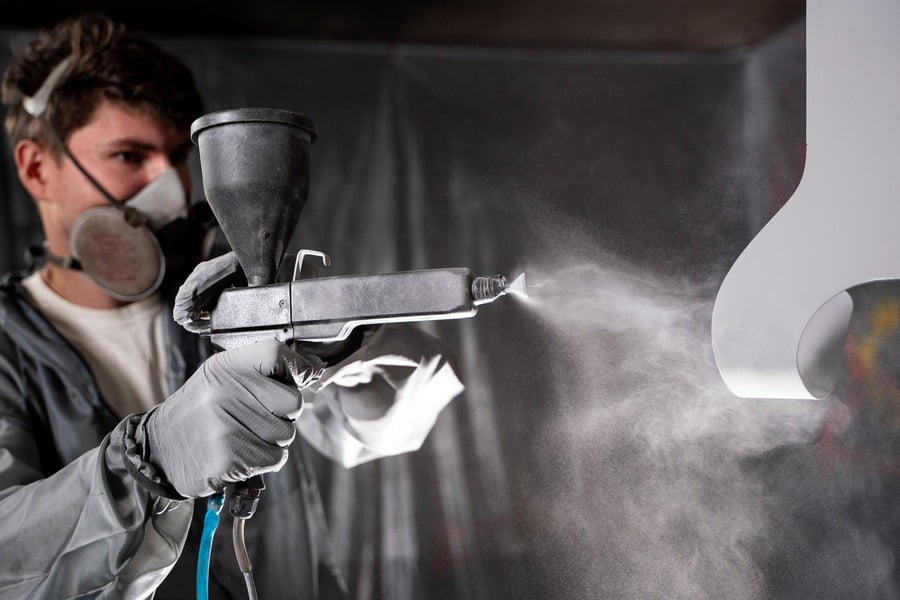When it comes to insulating your home, safety is naturally a top priority. One question that often arises is: is spray foam flammable? This is a crucial concern for homeowners considering this insulation option.
This article clarifies the fire safety of spray foam by exploring its flammability, fire ratings, and the factors that influence them. By the end, you’ll have a solid understanding of how spray foam insulation performs in terms of fire safety.
Table of Contents
- Is Spray Foam Flammable?
- Understanding Fire Ratings
- Determining Factors for Fire Ratings
- Factors Affecting Flammability
- Conclusion
Is Spray Foam Flammable?
Spray foam insulation consists of two main components: polyurethane and isocyanate. Both components are flammable in their individual, solid (cured) states. However, when mixed during installation, these components create a liquid foam that remains flammable until it dries and hardens (cures completely). This curing process can take several hours, depending on the specific type of spray foam used.
Understanding Fire Ratings
Fire ratings play a crucial role in determining the fire safety of various materials, including spray foam insulation. These ratings provide valuable insights into how a material responds to fire exposure and its ability to resist flames and heat.
For spray foam insulation, fire ratings are typically categorized into different classes or levels based on established testing standards. These ratings indicate the degree of fire resistance the insulation offers. The most common fire rating classes for insulation materials include Class A, B, or C, with Class A being the highest level of fire resistance.
Class A Fire Rating
Spray foam insulation with a Class A fire rating exhibits excellent fire resistance. It means that the material has demonstrated high effectiveness in preventing the spread of flames and limiting heat release during a fire. This rating is often attributed to materials that have undergone rigorous testing and have shown superior fire-retardant properties.
Class B and Class C Fire Ratings
Materials with Class B and Class C fire ratings also offer varying degrees of fire resistance, albeit to a lesser extent than Class A. While they might not provide the same level of protection as Class A materials, they still offer significant fire-retardant qualities, contributing to slowing down the spread of fire.
Determining Factors for Fire Ratings
Several factors influence the fire rating of spray foam insulation:
- Chemical Composition : The specific chemicals and additives in the foam significantly impact its fire resistance. Some chemicals are naturally more fire-resistant, and certain additives can improve the overall fire performance.
- Thickness and Density : Thicker and denser foam applications offer better fire resistance compared to thinner or less dense applications. This is because thicker and denser foam provides a greater barrier against flames and heat.
- Testing and Certification : Spray foam insulation must undergo standardized testing procedures to determine its fire rating. These tests measure the material’s ability to resist flames, smoke, and heat emission, ensuring accurate assessment of its fire safety properties.
Factors Affecting Flammability
Several key factors influence the flammability of spray foam insulation:
Application Technique
Professional application using proper techniques minimizes flammability risks. Skilled application ensures even distribution of the foam, reducing potential weak spots.
Curing Time
During the initial curing phase, the foam is more susceptible to fire due to emitted volatile compounds. However, as curing progresses and the foam solidifies, the risk diminishes significantly.
Chemical Composition
The specific chemicals in the insulation can greatly impact its flammability. Formulations with fire-retardant chemicals offer enhanced fire resistance.
Environmental Conditions
Extreme temperature and humidity during application and curing can affect flammability. These factors can potentially alter the curing process and influence the material’s susceptibility to fire.
Thickness and Density
Thicker and denser foam generally offers better fire resistance compared to thinner applications. Denser material acts as a barrier against flames and heat, slowing down fire spread.
Compliance with Standards
Adhering to safety standards and regulations ensures the spray foam insulation meets specific safety criteria, reducing potential flammability risks.
Understanding these factors is crucial when choosing spray foam insulation and ensuring its safe application. By considering these aspects and prioritizing proper installation techniques, you can mitigate potential flammability risks and maximize the fire safety of your home.
Conclusion
While spray foam insulation is not inherently fireproof, it offers valuable fire safety benefits when chosen and installed correctly. Understanding its fire ratings, the factors impacting flammability, and the importance of professional application are crucial for ensuring a safe and comfortable living environment. By choosing spray foam insulation with a high fire rating and ensuring it’s installed by certified professionals, you can significantly enhance the fire safety of your home.
Remember, professional installation ensures proper application, distribution, and thickness of the foam, maximizing its fire-retardant properties and minimizing potential weak spots. If you’re considering spray foam insulation for your home, talk to the experts like Ener-Spray today to learn more about high-quality spray foam insulation solutions and how they can benefit your property.
